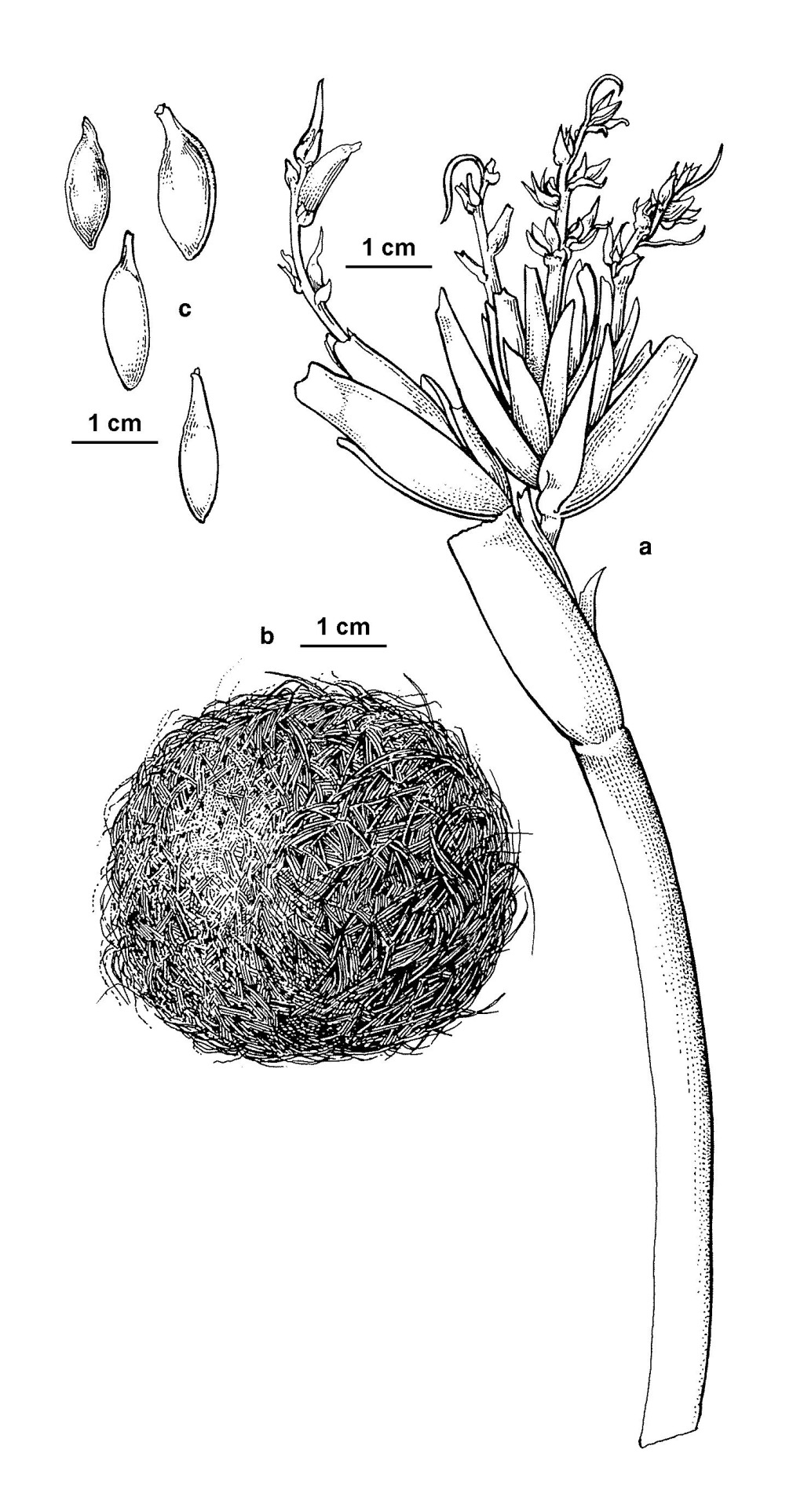Posidoniaceae
Marine perennial, submerged herbs; rhizomes 1 or 2 per node, initially herbaceous, usually becoming lignified and covered by scales and leaf-sheaths, irregularly branched. Leaves alternate, distichous, sessile; lamina linear and strap-like, base sheathing, ligulate with auricles present, apex rounded to truncate; scales numerous in each leaf axil. Inflorescence made up of 2–4 spikes arranged in a raceme, each spike terminated by a narrowing vegetative apex; bracts leaf-like, but progressively reduced towards apex of axis. Flowers small, bisexual; perianth reduced to vestigial scales and hence, appearing absent; stamens 3(or 4), sessile with anthers separated by a broad connective, pollen filamentous; carpel 1; ovary ellipsoid; stigma sessile, oblique and irregularly 1–3-lobed. Fruit fleshy, small, becoming detached and free-floating in the water, eventually opening by longitudinal slits to release the single seed; seed without endosperm.
A single genus, Posidonia.
Posidonia has sometimes been included in the Zosteraceae or in the Potamogetonaceae.
Pollination occurs within the water; the filamentous pollen floats through the water to the discoid, irregularly lobed stigma.
Conn, B.J. (1994). Posidoniaceae. In: Walsh, N.G.; Entwisle, T.J., Flora of Victoria Vol. 2, Ferns and Allied Plants, Conifers and Monocotyledons, pp. 160–161. Inkata Press, Melbourne.
 Spinning
Spinning

